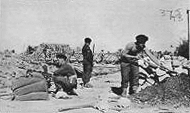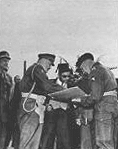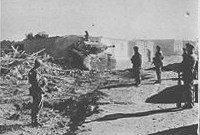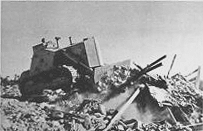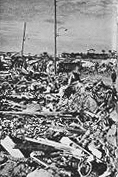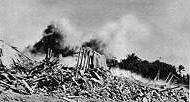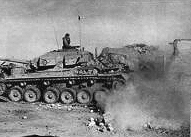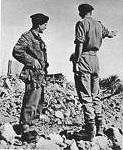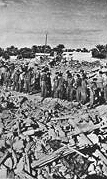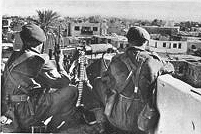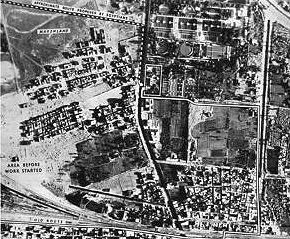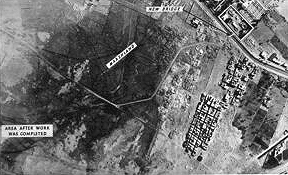THE ILLUSTRATED LONDON NEWSDECEMBER 22, 1951
NOT PUNITIVE BUT A NECESSARY MILITARY MEASURE: THE BUILDING OF “PEGASUS AVENUE” JOINING THE SUEZ GARRISON WITH A WATER FILTRATION PLANT
On
December 7, Lieut. General Sir George Erskine, commanding British
troops in Egypt, announced that at dawn on the following day British
troops would begin the construction of a new road to the water filtration
plant outside the port in order to enable the transport of materials
to it with out interference and to protect its garrison, which had
been subjected to terrorist bomb-throwing, resulting in considerable
damage to the plant. On the same day, Brigadier W. Greenacre, Suez
District Commander, met the Egyptian Govenor of Suez, Ibrahim Azky
el Kholy Bey, and showed him exactly where the road would be made
and indicated the buildings that would be demolished to make way for
it. The operation was carried out by a party of Royal Engineers assisted
by a troops of the 4th Battalion Royal Tank Regiment, with some bulldozers.
One battalion of the 16th Parachute Brigade, under the command of
Brigadier K.T. Darling, was deployed to protect the working parties.
The new road named “Pegasus Avenue” after the badge of
the Parachute Brigade, was completed in thirty-six hours, and this
included the construction of a Bailey bridge over the Sweet Water
Canal. Egyptians who have had their home demolished are to be compensated
by the British Government. The infiltration plant provides drinking
water for the troops in the Suez area and for the ships entering Port
Tewfik at the southern entrance of the Suez Canal. |
|
|
|
|
|
|
| |
|
| |
|
|
| |
|
|
THE ILLUSTRATED LONDON NEWSDECEMBER 29, 1951
Showing the old route to the water filtration plant and the route acros the marshland suggested by the Egyptians: an aerial view
For comparison: the same area after a new road had been made to the filtration plantBEFORE AND AFTER THE BUILDING OF “PEGASUS AVENUE”
